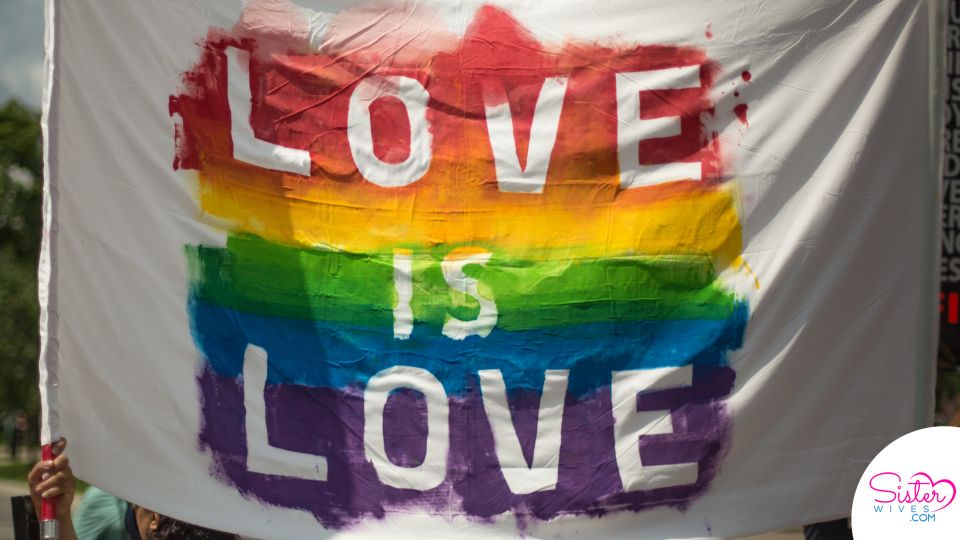Why Polygamy and Polyamory Are Not Included in the LGBTQ Community

Something many poly relationships encounter is the assumption that polyamory and polygamy are part of the LGBTQIA+ community, which we are not. In order to understand why that is, let’s take a look at the reasons people make these assumptions and why they aren’t correct.
Why Being Poly is Different Than Being LGBTQ
The LGBTQ community, also known as LGBT, LGBTQIA+, LGBTIQAPD, represents individuals who identify as lesbian, gay, bi-sexual, transgender, or otherwise queer, which is an umbrella term for anyone who is not straight and not cisgender. These terms all identify their sexual orientation, which is part of a person’s identity in relation to what gender or genders they are attracted to.
Polygamy and polyamory are not sexual orientations. Polygamy is almost always heterosexual, with one person who has multiple spouses of the opposite gender, or sister wives. Whereas polyamory is not as clearly defined, and can consist of various types of consensual non-monogamous relationship dynamics including those with LGBTQ individuals. So, if an individual identifies as LGBTQ and poly, they’re part of the LGBTQ because of their sexual orientation not because they’re poly, though many may find the two identities are intertwined.
In short, the difference is that LGBTQ defines a person’s sexual orientation, while polygamist and polyamorous define a person’s relationship style.
Why This Assumption is Made
Poly lifestyles - polygamy especially - often face bias similar to what LGBTQ people have in the past, particularly regarding marriage and acceptance into mainstream society. Some believe poly people deserve a place in the LGBTQ community since they’ve experienced struggles with being outside of the norm, while others feel that they aren’t far enough outside the norm to have a spot in the community. However, most people who are actually part of said norm or new to either community don’t realize the difference between the two because society tends to clump “unconventional” groups together.
There’s also some confusion around the term polysexual in relation to polyamory and polygamy. Polysexuality means the individual is attracted to many different genders, including intersexual or people that don’t identify with the typical definitions for male or female bodies. This may be confusing to some who see poly in the word, but that’s just because the prefix “poly” means “many” and isn’t exclusive to either community, though we do tend to refer to the polygamist and polyamorous communities.
How Our Struggles Are Similar, and How They’re Not
While we cannot say that our struggles are the same, we do share some common ground. Mostly, these similarities are based on the fact that we are both oppressed for being different. Until 2015, we were both struggling with the fact it was illegal for us to marry. As we all know, not being legally married to a partner is hard both emotionally as well as financially and medically. While many countries have granted marriage equality to same-sex marriage, as they should, polygamist marriages are still illegal. So while some may have assumed that multi-partner marriages would be legalized next, the only progress we have seen is Utah decriminalizing it so that it’s not a felony anymore last year. It’s still a felony in every other state.
Another difference is representation: The LGBTQ community does have more representation in mainstream media than polyamory or polygamy. However, there are also a lot more people in Western culture who identify as LGBTQ. There are also a lot more types of oppression that they have had to face historically that polygamists and heterosexual polyamorous people haven’t faced as much, or at all. None of this is to say one group’s struggle is any less than the other, but to provide context to help unblur the line between the two communities.
Be that as it may, we can all relate to the fact that our relationships are seen by parts of society as immoral, or that something is “wrong with us.” That’s something anyone would struggle with! People who have experienced that feeling will almost always feel compassionate for others who have as well. We all support the idea that love is love and promote acceptance and support for one another. Our shared experiences make it easy for us to relate and rally behind one another.
In Summary
Polygamy and polyamory are not included in the LGBTQ community because the former defines types of relationship styles and the latter defines kinds of sexual orientations. However, some polyamorous people may also, but not always, identify as LGBTQ while polygamists are traditionally heterosexual. Though some people misidentify us as members of the same community because of our similar experiences of living “different” lifestyles, our experiences are still different and unique to our respective groups. While polygamy and polyamory may not be included in the LGBTQ community and vice versa, we still stand together and support one another in our respective efforts to change the way society regards our relationships.

Published By: Sister Wives
Matchmakers Inc: Sisterwives.com





